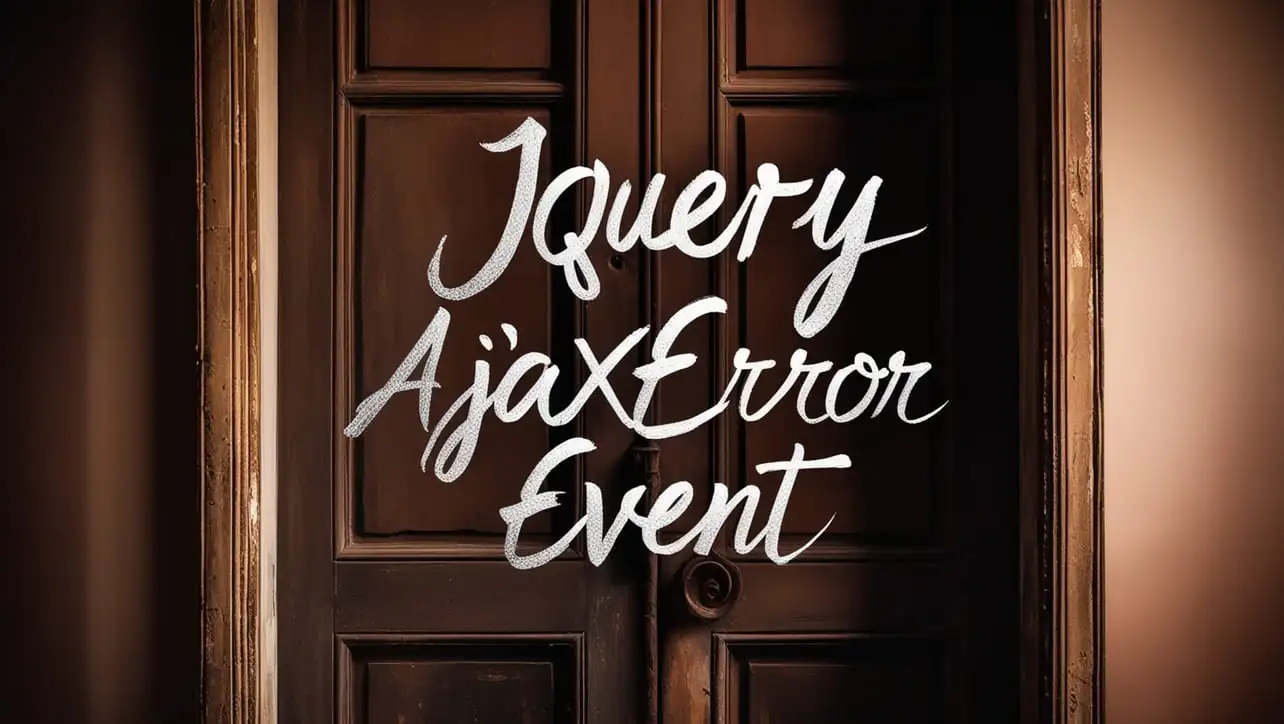
jQuery Topics
- jQuery Introduction
- jQuery Callbacks
- jQuery deferred
- jQuery selectors
- jQuery Ajax Events
- jQuery Ajax Methods
- jQuery Keyboard Events
- jQuery Keyboard Methods
- jQuery Form Events
- jQuery Form Methods
- jQuery Mouse Events
- jQuery Mouse Methods
- jQuery Event Properties
- jQuery Event Methods
- jQuery HTML
- jQuery CSS
- jQuery Fading
- jQuery Traversing
- jQuery Utilities
- jQuery Properties
jQuery ajaxError Event

Photo Credit to CodeToFun
🙋 Introduction
jQuery simplifies asynchronous JavaScript and XML (Ajax) requests with its powerful tools and methods. One such method, the ajaxError event, allows you to handle errors that occur during Ajax requests. While the traditional .ajaxError() method is deprecated, you can now use .on() to achieve the same functionality.
In this guide, we'll explore the ajaxError event, its syntax using .on(), and provide clear examples to help you grasp its usage effectively.
🧠 Understanding ajaxError Event
The ajaxError event is triggered when an Ajax request fails. It allows you to define a function to handle errors, providing an opportunity to gracefully manage unexpected situations, such as network issues or server errors.
💡 Syntax
The syntax for the ajaxError event is straightforward:
.on( "ajaxError", [, eventData ], handler )📝 Example
Handling Ajax Errors:
Suppose you have an Ajax request and you want to handle errors gracefully. You can use the .on() method to bind the
ajaxErrorevent to a function:example.jsCopied$(document).on("ajaxError", function(event, jqXHR, ajaxSettings, thrownError) { console.log("An error occurred during the Ajax request:", thrownError); });This code will log any errors that occur during Ajax requests to the console.
Displaying Error Messages:
You can also display error messages to users when Ajax requests fail. Here's an example where we show an alert with the error message:
example.jsCopied$(document).on("ajaxError", function(event, jqXHR, ajaxSettings, thrownError) { alert("An error occurred: " + thrownError); });This will alert users with the error message whenever an Ajax request encounters an error.
Handling Specific Errors:
You can customize error handling based on specific conditions. For instance, let's handle errors only for requests to a particular URL:
example.jsCopied$(document).on("ajaxError", {url: "example.com/api"}, function(event, jqXHR, ajaxSettings, thrownError) { console.log("An error occurred for URL:", event.data.url); console.log("Error:", thrownError); });This code will log errors only for Ajax requests to "example.com/api".
Passing Additional Data:
You can pass additional data to the event handler using the eventData parameter. This allows you to customize error handling further based on specific requirements.
Graceful Error Handling:
Consider providing user-friendly error messages and fallback options to ensure a smooth user experience even when errors occur during Ajax requests.
🎉 Conclusion
The ajaxError event, though deprecated in its traditional form, remains a crucial tool for handling errors during Ajax requests. By utilizing .on() with the ajaxError event, you can effectively manage errors, display informative messages, and provide fallback options when necessary.
Understanding and mastering this event will contribute to building robust and user-friendly web applications.
👨💻 Join our Community:
Author

For over eight years, I worked as a full-stack web developer. Now, I have chosen my profession as a full-time blogger at codetofun.com.
Buy me a coffee to make codetofun.com free for everyone.
Buy me a Coffee












If you have any doubts regarding this article (jQuery ajaxError Event), please comment here. I will help you immediately.